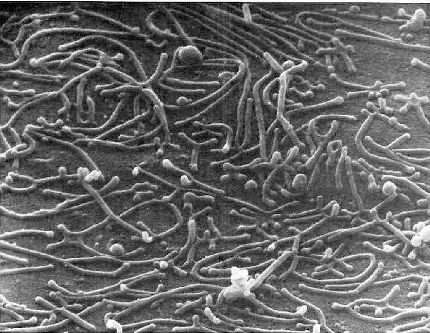Livestock farms stop using antibiotics, can still be ground for drug-resistant microbes, according to a new study. Scientists have found that bacteria in a group of Canadian pork remained largely immune to antibiotics, two years after farmers stop dosing animals. This resistance to antibiotics can eventually make their way to hospitals and human food, although experts warn that any connection is still not proven. Farmers regularly seen cattle, pigs and chickens with antibiotics to reduce the low level of infection, which slow down the growth of these animals. But the wily bacteria quickly develop resistance. Livestock farms often edges resistant bug that can pass to humans, and possibly proliferation-resistance to other microbes. Scientists have suggested that if farmers stopped using drugs, bacteria, lead to lower their defense to save energy in the end feet of DNA, which encodes resistance to antibiotics. To find out if it actually happens, ecologist Martin C. Nir ™ from McGill University in Montreal, Canada, and colleagues studied bacteria on the farm of the University, which in January 2007 banned all antibiotics, including two widely used types: Tilozin and hlortetratsyklyn. They controlled the gut bacterial populations in 10 pigs search for bacteria resistant to common drugs in their waste. To the surprise team, even after 2 s. When the researchers grew the bacteria in the laboratory, for example, 70% to 100% of them are still resistant to hlortetratsyklyn when pigs were killed. "I did not expect such a high level of resistance remain," said C. ™ Nir, whose team will publish the results in the January issue of << Microbial Ecology. >> Many resistance genes easily get rid of, ch ™ Nir notes. Bacteria often store them on circular pieces of DNA known as plasmids that are not part of the core genome of microorganisms. Given these plasmids around energy costs, and if they do not need bacteria to expel him for several days. But many of the microbes command strattera online Ch ™ Nir studied cherished hlortetratsyklyn gene on plasmid stability, even after many years without antibiotics. Singular ™ Nir suspect resistance genes may have stuck around because they are linked to other genes the bacteria need to survive. One hypothesis is that other genes plasmids protecting animals from high levels of copper and zinc metal contained in pig feed. And as long as the mistakes kept the resistance, they can share with other bacteria they encounter. Most screens farms traced only resistance in pathogenic bugsthose, that cause disease. But these organisms represent only a small percentage of microbes in the intestine of pigs, ch ™ Nir notes. Recent data, he said, show that the common practice of swine waste as fertilizer spreading trucks as resistance to antibiotics of agricultural land. These bacteria can share resistance to other bacteria that are on crops and in the lower reaches of water ecosystemsbacteria, which can lead to illness, ch ™ Nir says. "This is a time bomb."

The study emphasizes the indirect effects of antibiotics that scientists have long worried, says microbiologist Julie Zilles at the University of Illinois, Urbana-Champaign, who was not involved in the work. However, she notes that it is difficult to trace resistance to antibiotics from livestock farms to medical facilities. Impact on the human food is also not clear, says H. Scott Hurd, safety of animal expert of the World Health Organization and the University of Iowa, Ames. When scientists trace the bacteria through the meat, he says, they are flesh just in case. Employees of slaughterhouses and meat processing facilities follow guidelines to keep bacteria from pig intestine pollution and other meat item, he said. "Risk assessment shows us that time, the food gets to the consumer, there are very few resistant bacteria left."
However, Heard said though farmers used hlortetratsyklyn for 50 years, food safety experts conducted monitoring strains only in the past decade. He agrees with Nir ™ mean the need for further research on the spread of resistance genes from the farm to the environment. "Obviously, we are creating resistant bacteria on the farm," says Heard. A new study, "causing concern", he says, "but not to answer questions."
No comments:
Post a Comment